- Home
- H. R. F. Keating
Agatha Christie Page 2
Agatha Christie Read online
Page 2
The thirty-four-year-old Mrs Christie was not an unknown quantity. Her first book, The Mysterious Affair at Styles, featuring a little Belgian detective named Hercule Poirot, had sold a mere 2,000 copies, but she was also well known as a writer of detective short stories. In 1923, when the weekly Sketch published a series of them, a whole page of pictures was devoted to the author at home, at her typewriter, on the telephone, or with her small daughter. Hughes Massie, her agents thought that Collins with their accent on detective fiction would be the ideal publisher in Britain. They were proved right. The Murder of Roger Ackroyd was published in a first edition of approximately 5,500 copiesI, and rapidly sold over 4,000 of these – considered then a very good sale. In America Agatha Christie was published from the first by Dodd, Mead.
Perhaps emboldened by this, Collins were able to make the following claim for their crime fiction in their catalogue for autumn 1926: ‘We realize that the success of a Detective Novel depends upon the ingenuity and infallible accuracy of the author in the handling of his plot. We realize, too, that mere sensation based on irrelevant episodes will never make a good Detective Novel. We have accordingly set a very high standard. Only the best will do. That is why we have today the finest list of Detective Novels in existence.’
Despite the furore caused by The Murder of Roger Ackroyd, there was no reprint during the first year of publication, and the days when first printings would be ten times that initial figure were still far ahead. But a few months after publication an event occurred which was to have a profound – though not entirely favourable – effect on Agatha Christie’s future career. She disappeared.
Suddenly the missing mystery writer was headline news, her name known throughout the country. Inevitably, there were those who said – unfairly – that it was a publicity stunt. Equally unfairly, there is no denying that the disappearance did indeed have a considerable effect on the sales of her next books. The Big Four (1927), which is really a collection of four linked short stories, sold over 8,500. The Mystery of the Blue Train (1928), based on a short story entitled ‘The Mystery of the Plymouth Express’ and described by Agatha Christie herself as ‘easily the worst book I ever wrote’, dropped to just below 7,000. The Seven Dials Mystery (1929), a sequel to an earlier book, The Secret of Chimneys, neither of them typical Christie, rose again to over 8,000. There can be few better examples of the effect of press publicity. Its ethics are another matter.
The year 1930 was a momentous one both for Agatha Christie personally and for the house of Collins. In September Mrs Christie, by now divorced, married the archaeologist Max Mallowan and began a life of great personal happiness. As if in celebration, the same year saw the publication of Murder at the Vicarage, the first book under a new six-book contract with Collins, in which Miss Jane Marple was introduced. For Collins, 1930 saw the birth of the Crime Club, the brainchild of Sir Godfrey and his nephew, young William Collins, who felt that the vogue for the detective story and the enormous popularity of book clubs could profitably be linked. Not that the Crime Club was ever a book club; simply the imprint under which Collins published crime fiction. The first title was The Noose by Philip Macdonald, with a first printing of approximately 5,500. A few months later came Murder at the Vicarage. But by now the publicity bonanza was over and the first printing was back to 5,500. Agatha Christie did not shoot to best-sellerdom overnight.
It was not until Three Act Tragedy in 1935 (Murder in Three Acts in America) that she managed to sell 10,000 within the first year of publication, and 1943 before she reached 20,000 with Five Little Pigs (Murder in Retrospect in America) – perhaps a result of wartime dependence on the printed word for entertainment. Thereafter she never looked back and the Agatha Christie phenomenon becomes the Case of the Escalating Sales, with Sparkling Cyanide, called in America Remembered Death (1945), selling 30,000 within twelve months, and The Hollow, America’s Murder After Hours, touching 40,000 in the following year. By 1950, when her fiftieth book, A Murder Is Announced, was published, the first printing was 50,000 and her subsequent crime books have never sunk below that figure. Passenger to Frankfurt, the ‘extravaganza’, as she called it, published to coincide with her eightieth birthday, beat all records, for by the end of the first year there were 58,000 copies in print. Sleeping Murder, the last Christie thriller of all and the final Miss Marple story, had a first printing of 60,000.
Despite the publicity attached to the recent star-studded film Murder on the Orient Express, Agatha Christie’s success was never dependent on such outside stimulants. It is doubtful if the early plays and films based on her books significantly affected her sales. Until the outbreak of war in 1939 only two of her books had been dramatized – Alibi in 1928, from The Murder of Roger Ackroyd, and Love from a Stranger in 1936, based on the short story ‘Philomel Cottage’; this was also filmed in 1937. But if stage and screen had less effect in the thirties than they do today, the coming of paperbacks introduced Agatha Christie to a new, avid and very faithful audience.
When Allen Lane founded Penguin Books in 1935, he was able to renew an old acquaintance, for he had handled Agatha Christie’s early hardback books while working for his uncle John Lane at the Bodley Head. Now two of these early Christie titles, The Mysterious Affair at Styles and Murder on the Links, were among the fifteen original titles in the famous greenback crime series, Agatha Christie and Dorothy L. Sayers being the only two authors to be represented by two books each. In a surprisingly short time, Agatha Christie had become the first author after Bernard Shaw and H. G. Wells to have a million paperback copies of her books published on one day. Since then she has been published in Britain by Fontana, Pan and Penguin, and her books are reprinted constantly. In America, too, she has had several paperback publishers, among them Dell and Pocket Books.
By 1955 she had become a limited company, Agatha Christie Ltd. In 1968 the company was acquired by Booker Books, a subsidiary of Booker Brothers McConnell, who were anxious to diversify their traditional shipping, sugar-growing and rum-distilling interests. They had already acquired Ian Fleming, author of the James Bond books. Now, once again, they took a 51 per cent stake in the future work of a best-selling author – and they chose well. Even so, Agatha Christie remarked in 1970 that if she wrote more than one book a year she would only enlarge the finances of the Inland Revenue, ‘who would spend it mostly on idiotic things’.
In 1965, inspired by the author’s seventy-fifth birthday, Collins decided to bring out a collected edition of her works. The name Greenway Edition was chosen for the series, after Greenway House, Agatha Christie’s Devonshire home. The first four titles were The Labours of Hercules, Crooked House (Agatha Christie’s own favourite among her books), A Murder Is Announced, and of course The Murder of Roger Ackroyd.
Collins also published or republished a number of titles which do not fall within the Christie crime canon. These include Star over Bethlehem (1965), a collection of stories and poems for children, all with religious themes; a volume of autobiography, Come, Tell Me How You Live, originally published in 1946 and reprinted in 1975; six romantic novels under the name Mary Westmacott, originally published between 1930 and 1956 and republished in a uniform edition in 1973 and 1974; a play, Akhnaton (1973); and Collected Poems (1973), which contained her earlier volume of verse, The Road of Dreams, originally published in 1925 by Geoffrey Bles.
To a publisher’s eye, she was one of the most professional of authors. Her typescripts arrived when she said they would. Her proofs were promptly corrected and returned. She did not care for any editing of her text, and as late as 1968 she wrote to Sir William Collins asking him to ensure that the spelling she used would not be changed unless a word had actually been misspelt; if there were two alternative spellings, she wanted her choice of spelling to be left alone. Similarly, she objected to sentences being rearranged to be more grammatically correct, especially in the case of spoken conversation, for this would make all the characters sound alike and not like ordinary, variable human being
s.
She liked to have a say in everything connected with her books, notably the jacket and the blurb. On one occasion, when by accident a jacket was not shown to her, she wrote angrily protesting about this and saying that she wanted to see every jacket design before it was finalized because she hated having things put over on her. As this implies, she had strong views about jackets. She would never consent to any representation of Poirot, not even as played by Albert Finney in Murder on the Orient Express; and though she once allowed his patent leather-shod feet to appear on the jacket of Poirot’s Early Cases, she was never happy with even this partial representation. Her preference was always for a motif, and she herself drew the design for the three intertwined fish which appear on the jackets of the Greenway edition.
She wrote fast and reckoned to complete a book in six weeks, working straight on to the typewriter and using three fingers instead of what she claimed was the more usual two, though her last few books were dictated straight on to the machine which Collins gave her for her eightieth birthday, because she had begun to find typing tiring. For a long time she averaged two books a year, and she maintained this output even during the war when circumstances such as paper shortages prevented such frequent publication. The result was two novels which she salted away, intending them to appear only after her death. In the case of Curtain: Poirot’s Last Case, she was sufficiently impressed by the success of the film, Murder on the Orient Express, and the resulting interest in Poirot, to relent and allow it to be published in 1975.
Agatha Christie was a professional and she expected an equal degree of professionalism from her publishers. On one occasion – well remembered at Collins – her author’s copies of Endless Night failed to arrive before she left for a holiday in Spain. She wrote to say that she had been absolutely infuriated to see a whole array of Endless Nights when she arrived at Heathrow airport and that, though she had found a parcel of books on her return home, these could hardly be called the author’s ‘advance copies’!
Besides a keen sense of what was properly due to an author, Agatha Christie was also very conscious of what was due to a work of creative imagination. She once replied to someone who wished to include an abridged passage from The Body in the Library in a modern language teaching series that, although it might be difficult for a person who was not himself an imaginative writer to appreciate, she felt making an abridged version of a creative author’s book was like mutilating his brainchild. She said that she felt this to be true of any abridgement, including recordings on tape. She did however allow her books to be serialized, and she was certainly aware of the difficulties of abridging, for she once tried to write a film version of her favourite Dickens novel, Bleak House – ‘such a good plot’ – and discovered ruefully: ‘the amount of characters in that book! I found I had to cut out many of the best ones.’
Although she was one of the world’s biggest sellers, outsold only by the Bible and Shakespeare, Agatha Christie was remarkably modest. She never expected the day’s work at Collins to be abandoned because she had crossed the threshold, and far from her craving publicity, her experience of it after the alleged ‘disappearance’ of 1926 caused her to shun it. She would never make a speech in public, not even at the party Collins gave to celebrate her eightieth birthday, when the leading literary editors came to pay her homage.
But despite her reticence, she had the essential self-possession that comes from being born into a comfortable level of society – perhaps one might best describe it as the ‘officer class’, for her brother went into the army after leaving Harrow, and her first husband was a colonel in the Royal Flying Corps. It was evidently a station of life which suited her: an appropriate setting for the bridge and crossword puzzles and gardening which she so enjoyed. Her letters to her publishers give an occasional tantalizing glimpse of a comfortable way of life which, for all her vast earnings, never inclined to the ostentatious.
Nevertheless, within the limits of her secure and ordered world, Agatha Christie was always conscious of social change. ‘When I reread those first books,’ she said in 1966, ‘I’m amazed at the number of servants drifting about. And nobody is really doing any work, they’re always having tea on the lawn.’ In her fiftieth novel, A Murder Is Announced, she endeavoured to show some of the changes wrought in Miss Marple’s village of St Mary Mead in the immediate post-war years. And the last book she wrote, Postern of Fate, published in 1974, contains a comment on one aspect of English life today which must have struck a responsive chord in many readers. ‘He was used, now, to the general pattern of labour in the building trade, electrical trade, gas employees and others. They came, they showed efficiency, they made optimistic remarks, they went away to fetch something. They didn’t come back. One rang up numbers on the telephone but they always seemed to be the wrong numbers. If they were the right numbers the right man was not working at this particular branch of the trade, whatever it was.’
Nor was her awareness of the need to move with the times confined to her books. In 1970 she wrote to her publisher saying that she had read a review of the Fontana series on Modern Masters. She asked if it would be possible to send her this series because she wanted to keep up to date and felt it would help her writing, and because she felt that Alexander must have an intelligent great-grandmother. The series includes such writers as Freud, Fanon, Chomsky and Wittgenstein. Alexander’s great-grandmother was then eighty.
On 13 May 1976, exactly two weeks before the fiftieth anniversary of the first publication of The Murder of Roger Ackroyd, a memorial service for Agatha Christie was held at St Martin-in-the-Fields. At the request of her family, the address was given by Sir William Collins, her friend and publisher. It was the crowning tribute, on both sides, to a professional and personal relationship which had endured for half a century.
I. Approximate because Collins’ detailed sales records were unfortunately destroyed during the Blitz.
The Mistress of Complication JULIAN SYMONS
1
For some years the Detection Club of London held its occasional informal dinners – as distinct from the formal one at which new members were inducted each year by making responses to the club’s ritual while they placed one hand upon a lighted skull – at a Soho restaurant. At one of these dinners I arrived late, and went straight into the dining-room, just in time to see the end of the soup. My seat was opposite that of the president, Agatha Christie, and as we ate the next course I became aware that her mild, unemphatic gaze was often directed at… could it be my expanding but hardly visible waistline? Was there a mark on my tie? It took me a minute or two to realize that she was looking, in a speculative rather than a censorious way, at my hands, and that they were rather grubby.
As soon as I could easily do so I got up, washed my hands, and returned. There is no ‘story’ here, no comment was made, and I can offer nothing more than a personal conviction that Agatha Christie was viewing those grubby hands as a possible constituent element in some plot. A man comes to table – his hands are grubby – faintly marked with some kind of stain – yet half a dozen people are prepared to say that he spent the whole day in his office… I feel sure that some such thoughts were passing through her mind.
She said once that she thought of turns in her plots most often while eating apples in the bath, but what they evidently spring from is unusually keen observation. In many ways she was what she appeared to be, a middle-class English lady with highly conventional opinions, but she was something else too. The middle-class lady had a considerable knowledge of the ways in which poisons work, derived from her World War I experience as a nurse, and also a keen professional interest in motives for and methods of murder. In its concern with detail this interest rarely transgressed beyond the bounds of a middle-class lady’s taste, and she would have felt it both unnecessary and unpleasant to describe the physical details of a violent crime, or the mental agony suffered by a victim of rape. Nobody is ever raped in an Agatha Christie story. Her attitude would have been
that one knows such things happen, but that they were hardly suitable subjects for detective fiction. It was the plotting of crime that fascinated her, not its often unpleasant end, and it is as a constructor of plots that she stands supreme among modern crime writers. Raymond Chandler once said that plotting was a bore, a necessary piece of journeywork that had to be done, and that the actual writing was the thing that gave the author pleasure. Agatha Christie’s feelings were almost the opposite of these, which is one reason why she didn’t care for Chandler’s work.
Her most stunningly original plots are those in The Murder of Roger Ackroyd, The A.B.C. Murders and And Then There Were None, but although these are her major achievements, she showed from the beginning an extraordinary assurance in handling the devices in a detective-story plot.
Her first book, The Mysterious Affair at Styles, was published in 1920 but written some years earlier, when she was working in a Red Cross dispensary during World War I. It was written in response to a challenge by her sister, and Hercule Poirot was conceived in a determination to create a detective outside the Sherlock Holmes pattern. Physically outside the pattern at least, for Poirot has both his forerunner’s mental acuity and his maddening zest for mystification. In general it is true that nothing becomes out of date more quickly than an old detective story but Styles, which was turned down by several publishers, remains wonderfully readable today. In part this is because of Poirot, but it is chiefly a tribute to the plot.

 Go West, Inspector Ghote
Go West, Inspector Ghote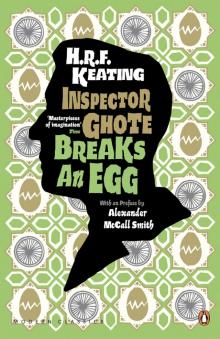 Inspector Ghote Breaks an Egg
Inspector Ghote Breaks an Egg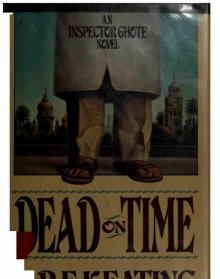 Dead on Time
Dead on Time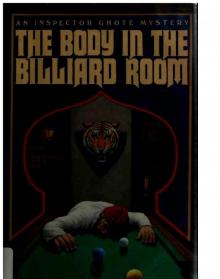 The Body in the Billiard Room
The Body in the Billiard Room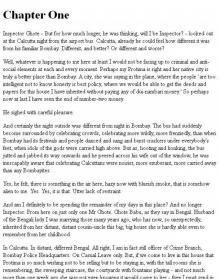 Bribery, Corruption Also
Bribery, Corruption Also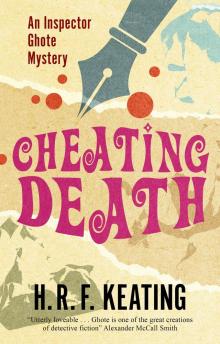 Cheating Death
Cheating Death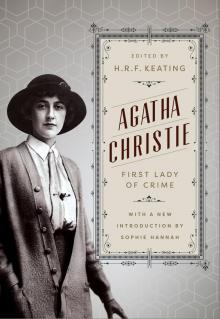 Agatha Christie
Agatha Christie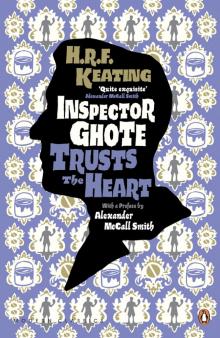 Inspector Ghote Trusts the Heart
Inspector Ghote Trusts the Heart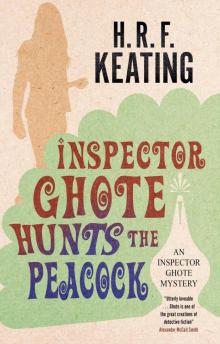 Inspector Ghote Hunts the Peacock
Inspector Ghote Hunts the Peacock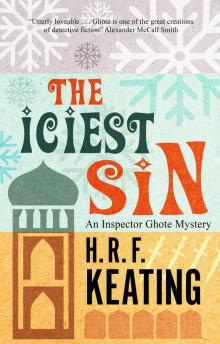 The Iciest Sin
The Iciest Sin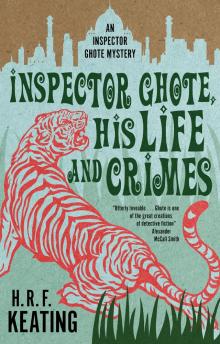 Inspector Ghote, His Life and Crimes
Inspector Ghote, His Life and Crimes Strong Man
Strong Man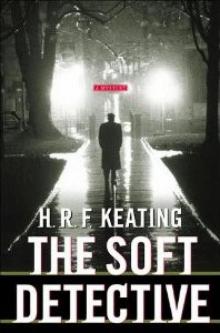 The Soft Detective
The Soft Detective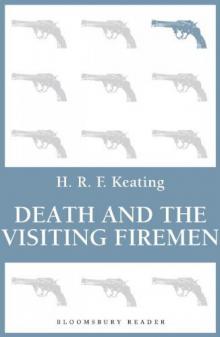 Death and the Visiting Firemen
Death and the Visiting Firemen Breaking and Entering
Breaking and Entering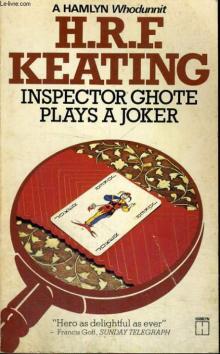 Inspector Ghote Plays a Joker
Inspector Ghote Plays a Joker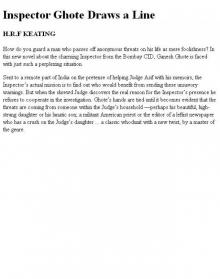 Inspector Ghote Draws a Line
Inspector Ghote Draws a Line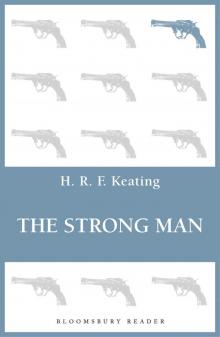 The Strong Man
The Strong Man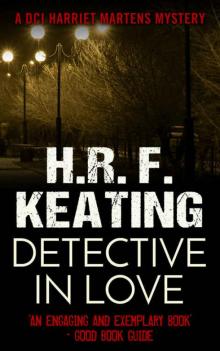 A Detective in Love (A Harriet Martens Thriller Book 2)
A Detective in Love (A Harriet Martens Thriller Book 2) The Perfect Murder: the First Inspector Ghote Mystery
The Perfect Murder: the First Inspector Ghote Mystery Inspector Ghote's Good Crusade
Inspector Ghote's Good Crusade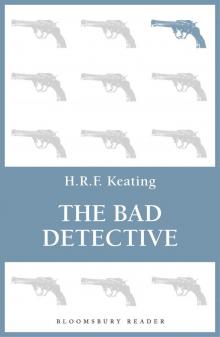 The Bad Detective
The Bad Detective The Dreaming Detective
The Dreaming Detective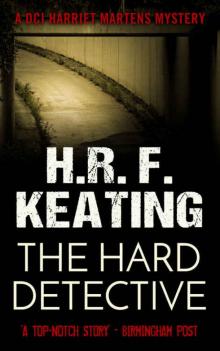 The Hard Detective (A Harriet Martens Thriller Book 1)
The Hard Detective (A Harriet Martens Thriller Book 1) The Dog It Was That Died
The Dog It Was That Died Murder Must Appetize
Murder Must Appetize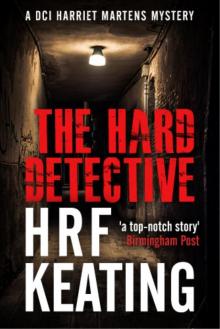 The Hard Detective
The Hard Detective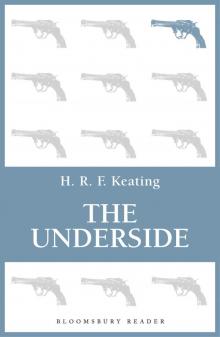 The Underside
The Underside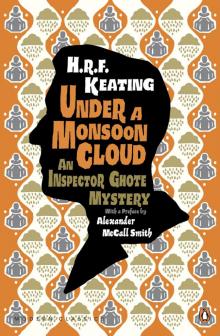 Under a Monsoon Cloud: an Inspector Ghote Mystery
Under a Monsoon Cloud: an Inspector Ghote Mystery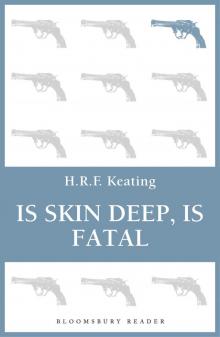 Is Skin Deep, Is Fatal
Is Skin Deep, Is Fatal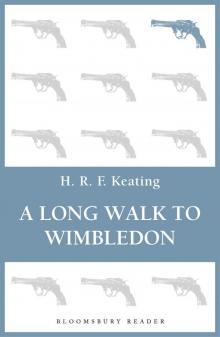 A Long Walk to Wimbledon
A Long Walk to Wimbledon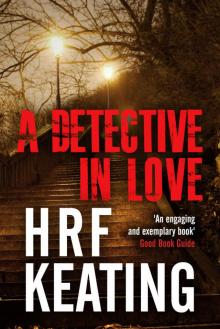 A Detective in Love
A Detective in Love A Detective at Death's Door
A Detective at Death's Door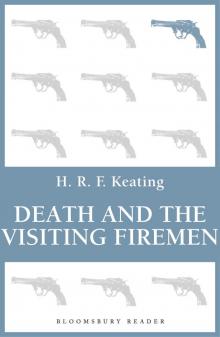 Death and the Visiting Fireman
Death and the Visiting Fireman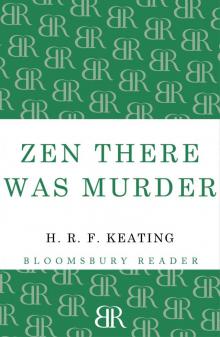 Zen there was Murder
Zen there was Murder